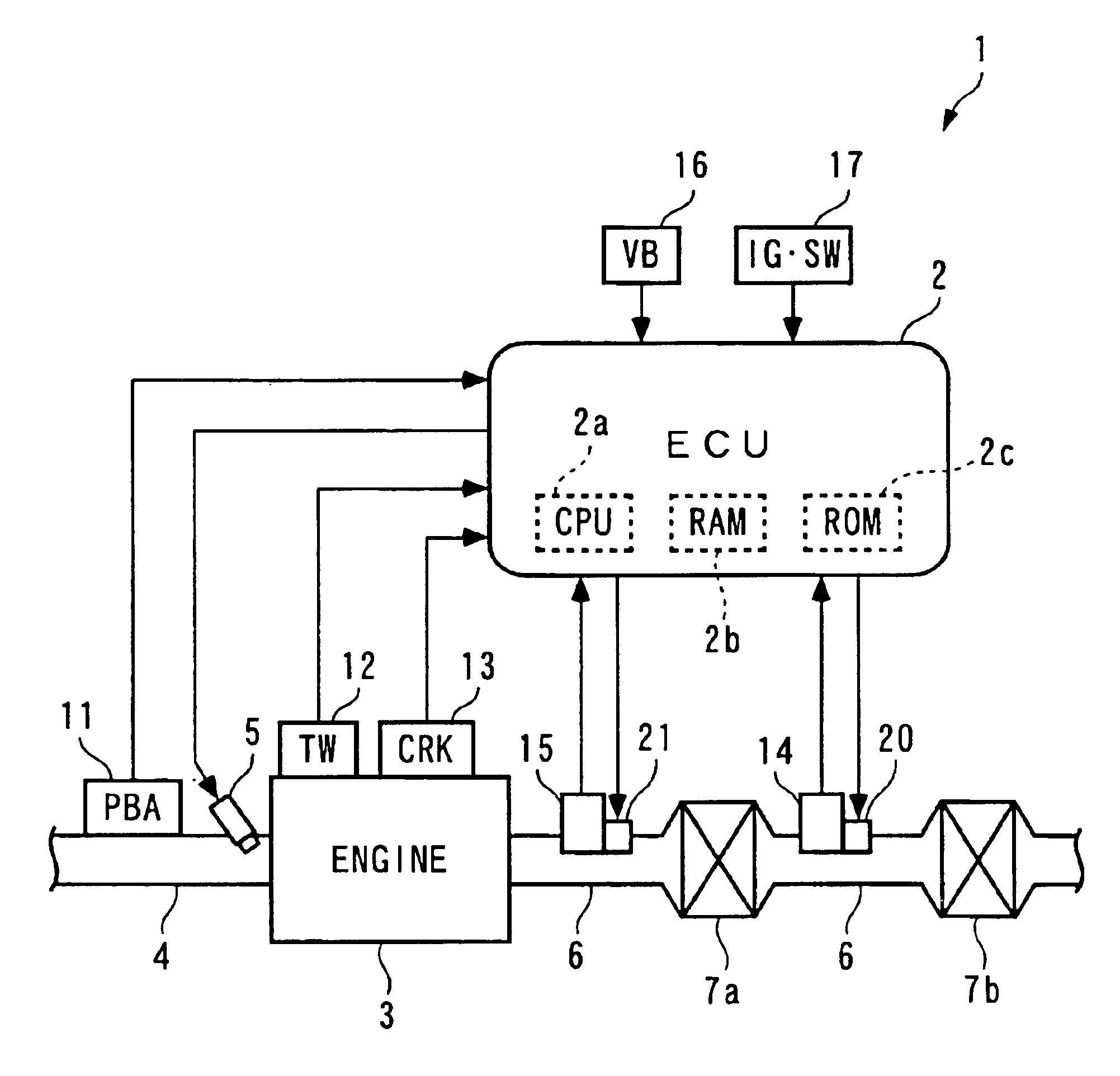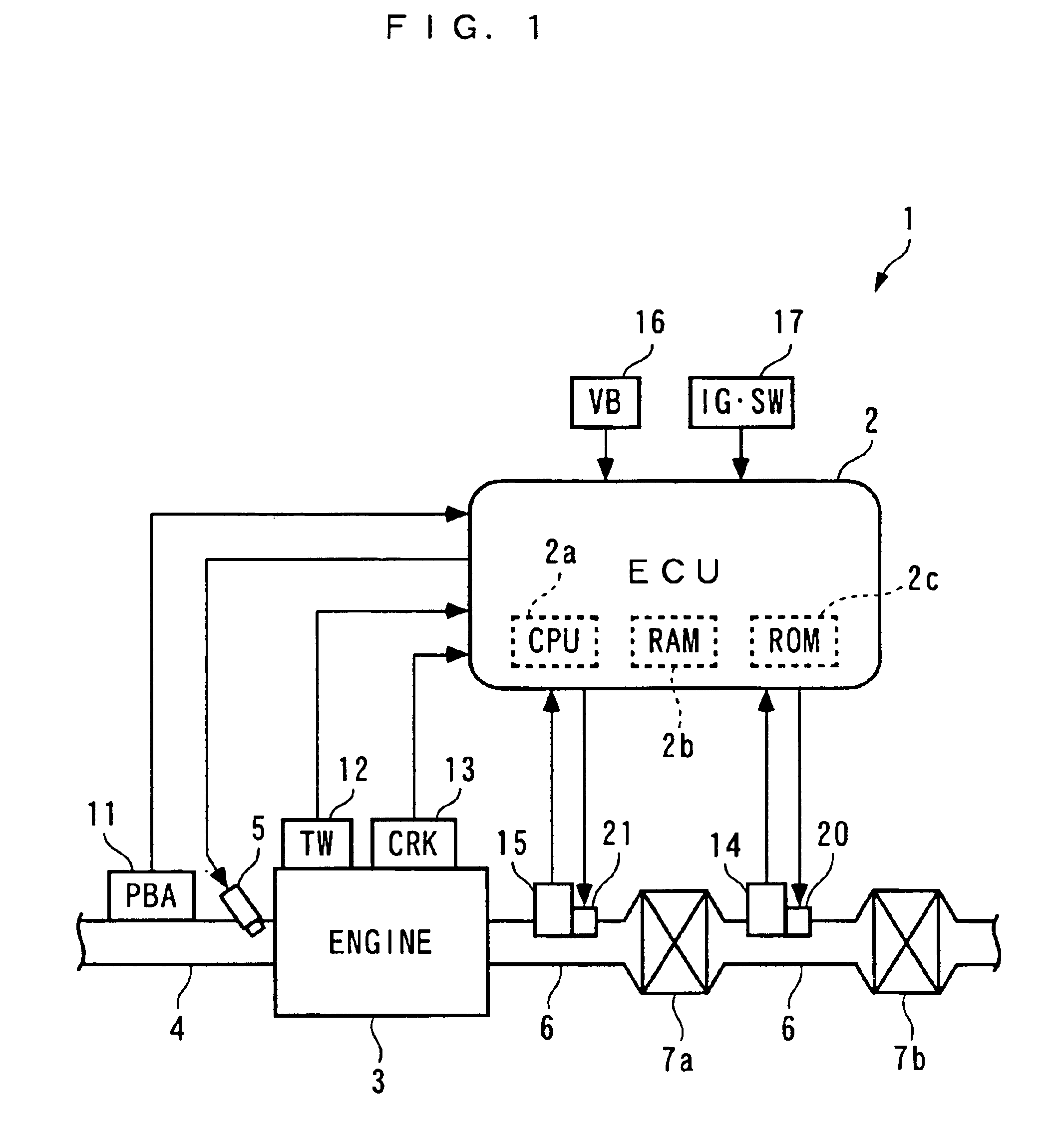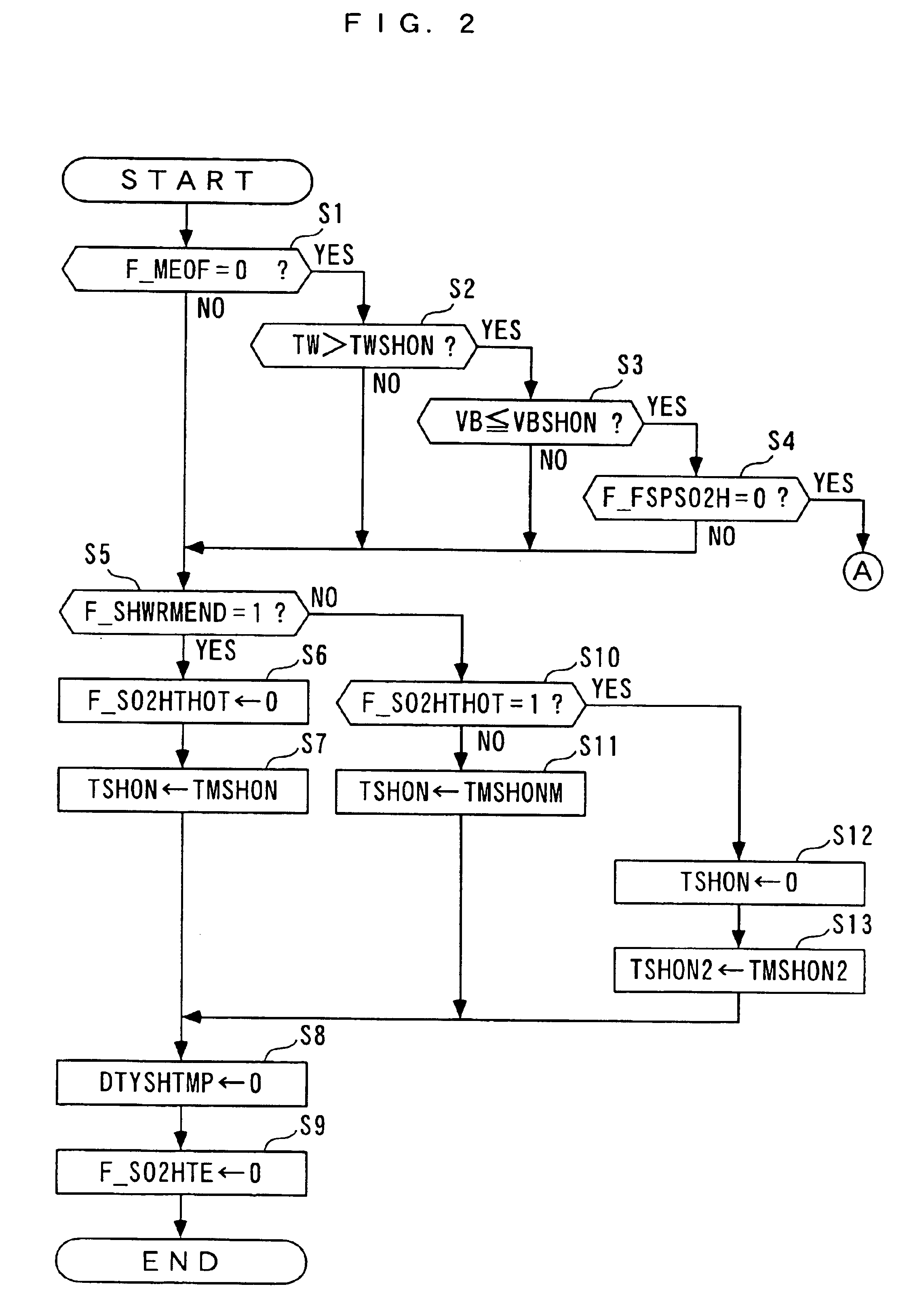Control system and control method for controlling heater, and engine control unit
- Summary
- Abstract
- Description
- Claims
- Application Information
AI Technical Summary
Benefits of technology
Problems solved by technology
Method used
Image
Examples
Embodiment Construction
The present invention will now be described in detail with reference to the drawings showing an embodiment thereof. FIG. 1 schematically shows the arrangement of a control system according to an embodiment of the invention and an internal combustion engine provided with an oxygen concentration detector including a heater to which the control system is applied. As shown in FIG. 1, the control system 1 includes an ECU 2, which executes duty control of heaters 20 and 21, as described hereinafter.
The internal combustion engine (hereinafter simply referred to as “the engine”) 3 is a gasoline engine installed on a vehicle, not shown. The engine 3 has an intake pipe 4 having an intake pipe absolute pressure sensor 11 inserted therein at a location downstream of a throttle valve, not shown. The intake pipe absolute pressure sensor 11 is implemented e.g. by a semiconductor pressure sensor, which detects an intake pipe absolute pressure PBA within the intake pipe 4 and delivers an electric si...
PUM
 Login to View More
Login to View More Abstract
Description
Claims
Application Information
 Login to View More
Login to View More - R&D
- Intellectual Property
- Life Sciences
- Materials
- Tech Scout
- Unparalleled Data Quality
- Higher Quality Content
- 60% Fewer Hallucinations
Browse by: Latest US Patents, China's latest patents, Technical Efficacy Thesaurus, Application Domain, Technology Topic, Popular Technical Reports.
© 2025 PatSnap. All rights reserved.Legal|Privacy policy|Modern Slavery Act Transparency Statement|Sitemap|About US| Contact US: help@patsnap.com



